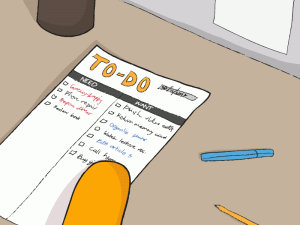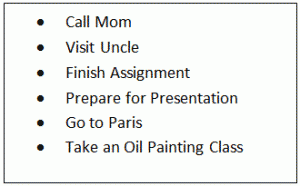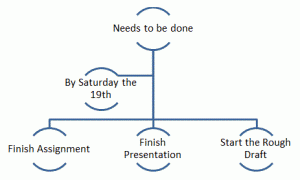 Do you have a lot of things to do and not enough hours in the day to do them? Time management is something that everyone has indented into their lives. Some are good at it and some, not so much. Some use it as an excuse for missing the daily Salah or doing Dhikr. Time Management 101 is to make a to-do list. But does it end there? Or is that just the beginning?
Do you have a lot of things to do and not enough hours in the day to do them? Time management is something that everyone has indented into their lives. Some are good at it and some, not so much. Some use it as an excuse for missing the daily Salah or doing Dhikr. Time Management 101 is to make a to-do list. But does it end there? Or is that just the beginning?
Having a to-do list gives you something to look at which reduces the stress from remembering everything you want/need to get done. It gives you a visual of where you are headed. Once you have a list down is when the real time management begins. The following steps will take you from writing your to-do list to getting it all done.
The human mind has 70,000 thoughts per day and a good portion of this number represents the ideas that one gets. The initial step is to keep a record of these ideas, then gradually taking the steps to act upon them.
1. Write down ideas:
Brainstorm things that you want to do, such as a new business idea or the surprise party you want to throw for a friend. This list can also include the things you need to get done for work or school such as finishing a project by a certain date. Example:
2. Prioritize the ideas and tasks:
Break the previous list down into four parts:
- want to get done immediately,
- want to get done in the far future,
- need to get done immediately, and
- need to get done in the far future.
Labeling tasks will give you a mind-set for all the actions that need to get done. Separate the things you want to do and the things you need to do. Write down all the things you want. These can be things you want to do immediately (i.e. buy a nice pair of shoes), or in the far future (i.e. go to Paris).
This step also includes writing down what you need to do immediately like fulfilling a work order, or in the far future i.e. completing the annual assessment. Separating the things you want from the things you need is essential because it organizes your list. What you need to get done is not necessarily more important than what you want to get done and vice versa.
You can classify this list is a variety of ways.

- Use a T-Chart
- A concept map, or
- Just a simple doodle
Do this step in whichever way you think you will be able to visually read it the fastest. Keep this breakdown of the things in a place where you often reach; such as your daily journal or a phone app. Having this will put it all together and structure your list.
3. Set deadlines:
Now that you have everything you need to do in writing, it is good to define some limits to your list. This step of following through your to-do list is to place a cap on it. It is up to you to decide where your cap goes. Only you know what your limits are. Try the following process:
Level 1 would be to place the cap on the “Need to get done immediately” list. This means that you will do these things right away and not worry about the other things on the list because you already have them written down somewhere. These are the things you need to get done the same day. Level 2 would be to place it on top of what you want and need to do immediately. Putting your far future to a rest will help you be more efficient sooner.
To set a deadline on things you need to get done only may be very harsh on yourself because you are ignoring the things you want. It is actually good to do the things you want (such as painting, reading, etc.) alongside the tasks you have to do because it will balance your actions. This step will help you create a new list which divides and shortens the chart into manageable tasks.
4. Use colour to show urgency:
You need to decide on a period of time that you need to do the things on your new list. This step is to set the timer for yourself. If you placed the cap on the things you need to get done immediately, then you need to give yourself a time frame for completing it. Giving yourself deadlines keeps you motivated to keep working hard. Even your far future deserves a deadline (ex. I will go to Paris after I turn 40 but before I turn 65). There may be things you need to do within the next hour and things you need to do before the next year, you must decide on the deadlines according to your personal responsibilities and expectations.
- Use red for the things you want to get done immediately
- Use any other colors to highlight the things that may be done in the near and far future.
5. Reward yourself with that little checkmark:
The little checkmark you put beside a task on your To-Do list may just be one of your biggest achievements. So, do not under-estimate the power of To-Do lists.
There are tons of resources out there for organization and making to – do lists, you can use whatever suits you the best. The Productive Muslim Daily Taskinator and Weekly Taskinator are really good resources that a lot of people are using these days. You may find whichever way you find best in completing the things on your to-do list, but remember the most important thing is to act on it and the most cliché one, do not leave it for tomorrow! Have fun!
P.S. Don’t forget the five most important steps to adding Barakah in your day are the obligatory prayers.
About the Author:
Salwa Alavi was brought up in Canada. She attended the University of Toronto where she completed her H.B.A in Geography, Math and History of Religion. Salwa currently resides in Texas as a housewife and volunteer at the local Masjid. She also loves scrapbooking, reading, and painting. She aspires to own her own art company one day.







